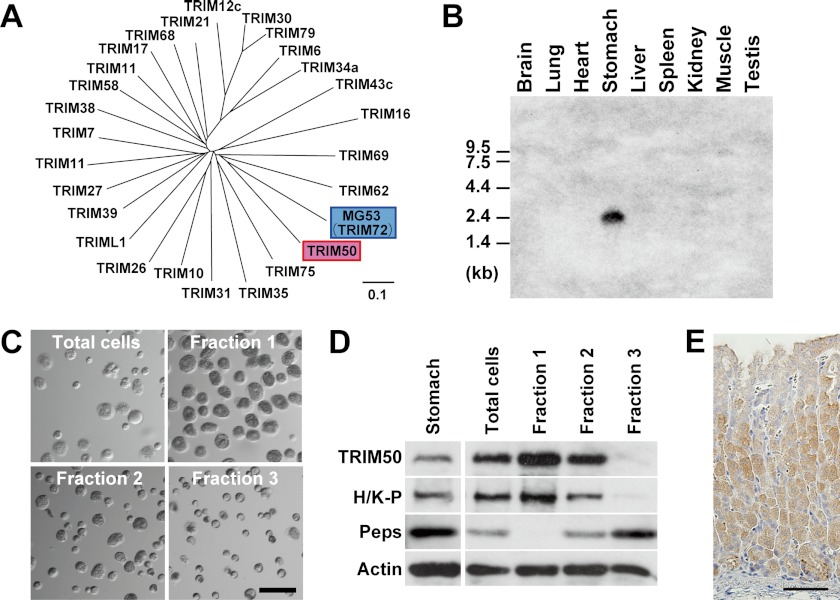FIGURE 1.
Specific expression of TRIM50 in gastric parietal cells. A, phylogenetic tree of TRIM/RBCC subfamily members containing the PRY and SPRY domains. Our BLAST search found ∼25 members categorized into the subfamily in mammalian protein databases. Using ClustalW software, the phylogenetic tree was generated based on their multiple sequence alignment. TRIM50 shows the highest sequence identity with MG53. The scale bar indicates substitutions per aligned position. B, Northern blot analysis of TRIM50 in mouse tissues. Total RNA preparations (25 μg per lane) from mouse tissues were analyzed using a probe derived from exon 2 of the Trim50 gene. C, phase-contrast images of fractionated gastric mucosal cells. Dispersed mucosal cells were prepared from mouse stomach tissue and separated on a Percoll density gradient; the fractions numbered 1, 2, and 3 correspond to low, intermediate, and high density fractions, respectively. Of the mucosal cells, parietal cells with a large size (∼25 μm in diameter) were enriched in fraction 1. D, detection of TRIM50 in gastric mucosal cell fractions. Total cell lysates prepared from each cell fraction (1 or 10 μg of protein) were analyzed using antibodies to TRIM50, H+/K+-ATPase (H/K-P, parietal cell marker), pepsinogen (Peps) (chief cell marker), and actin (loading control). E, immunohistochemical staining of TRIM50 in mouse gastric mucosa. Immunoreactivity of mAb84 was specifically observed in parietal cells. The scale bars indicate 50 μm (C and E).

